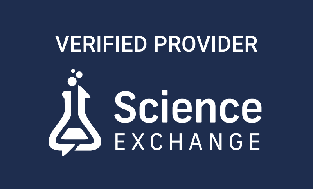One of the largest unmet clinical needs are disease modifying therapies for Alzheimer’s disease (AD), which is the most common neurodegenerative disease and is responsible for about 50% of dementia cases1. More than 6 million Americans live with AD and 1 in 3 seniors will die from AD or another form of dementia1. Currently, there are four approved therapies to treat symptoms related to cognition – Donepezil, Rivastigmine and Galantamine are cholinesterase inhibitors while Memantine is a glutamate regulator. These therapies do not address the underlying disease pathophysiology so finding new AD therapies is an area of active research. It is estimated that the NIH spend on AD is $3.1 billion1 and there are several foundations that support drug development studies and patient care. However, the failure rate of Alzheimer’s disease clinical trials is over 99%2 where the drug target is primarily β-amyloid or tau protein. Therefore, researchers are searching for new drug targets in cellular processes implicated in plaque or tangle formation seen in AD.
A lab at the Albert Einstein College of Medicine has taken a new approach to developing a drug that targets autophagy, which removes cellular waste and protein buildup. Autophagy has been an area of interest in neurodegenerative diseases and the researchers at Albert Einstein College of Medicine focused on chaperone-mediated autophagy, where chaperone proteins in the cell select specific proteins for degradation. They studied the importance of chaperone-mediated autophagy in the brain and found that when the process was disrupted, then insoluble protein aggregates accumulated in neurons3. The study also identified the critical drug target – LAMP2A, a lysosome associated protein that plays a critical role in chaperone-mediated autophagy. When LAMP2A was disrupted in mouse brain, the animal developed Alzheimer’s disease like symptoms including limited mobility and memory impairment due to inhibition of chaperone-mediated autophagy4. Interestingly, single cell RNA sequencing of AD brain tissues also showed inhibition of chaperone-mediated autophagy which increased with disease severity5. This key finding where a mouse model recapitulated the human disease state suggests that preclinical models can be very useful in understanding the role of chaperone-mediated autophagy in AD development and progression.
The next step in the study was the synthesis of an activator of chaperone-mediated autophagy called CA. When this drug was administered orally to mice with abnormalities in tau and β-amyloid or tau alone, it significantly reduced tau protein levels and β-amyloid aggregates and the animals had improvement in cognition, depression and anxiety over 4-6 months of drug dosing6. Another positive outcome of the study was that oral dosing of the drug did not cause adverse events in mice. Instead, the drug induced a reduction in gliosis which is the inflammation and damage in cells surrounding the neurons. Given these promising results, the lead investigators have founded a company called Selphagy Therapeutics to develop the CA drug and next-generation therapies that target chaperone-mediated autophagy and move these therapies into the clinic.
While it is not clear how these preclinical findings will translate to response in human patients, new therapies like CA that target disease relevant cellular processes have the potential to delay or even reverse neurodegeneration and neuronal cell death. Studies like these bring hope to the millions of patients with dementia and their families.
References:
2https://www.beingpatient.com/alzheimers-drug-trials-failure-rate/
4https://www.sciencedirect.com/science/article/abs/pii/S0092867421003792
5https://www.nature.com/articles/s41467-021-22501-9#citeas
6https://www.sciencedaily.com/releases/2021/04/210422150402.htm


